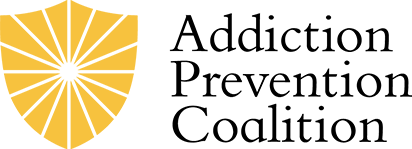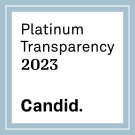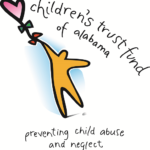It may start innocently enough. Perhaps a child sees their parent regularly grab a couple of tablets from a prescription pill bottle and gets curious. Maybe a classmate dares a teen to down a mystery capsule and the teen doesn’t want to be labelled a chicken. It could be that an adolescent is bored and decides to wander into the bathroom and peruse the medicine cabinet. But what begins as curiosity, a dare, or boredom can quickly become more sinister.
According to the National Institutes of Health (NIH), 16.5 percent of high school seniors report having illicitly used prescription drugs. More than nine percent have taken amphetamines – such as those prescribed for ADHD – and seven percent have turned to tranquilizers. Another seven percent have opted for opioids like oxycodone and hydrocodone, and more than four percent have swallowed sedatives. Dig into those startling statistics and it becomes clear that one-time prescription drug use among children and adolescents can quickly snowball into substance abuse.
Looking into Kids’ Hearts and Minds
Understanding the genesis of prescription drug misuse involves delving into the hearts and minds of young people. According to Latrice Dailey, Adolescent Counselor at Beacon Recovery, a UAB Medicine-affiliated outpatient substance abuse treatment program for adults and teens ages 13 to 18, unresolved trauma, uncomfortable emotions, stress, and even boredom push kids to self-medicate. “Most adolescents believe all people use drugs,” she says. “Popular songs and the media glorify drug use, so kids see it as a way to escape.”
Here are eight key reasons why children and adolescents turn to prescription drugs, along with suggestions for how to counteract those underlying causes.
 1. Boredom: Parents tend to roll their eyes when a child claims that they’re bored, but being at loose ends can lead adolescents to explore illicit drugs. Dailey encourages parents to get their children involved in extracurricular activities – and to get involved alongside them. Volunteer work, church activities, and scouting are all good options. “Sports can be a good outlet, but be aware that different organized sports use different types of drugs,” she warns.
1. Boredom: Parents tend to roll their eyes when a child claims that they’re bored, but being at loose ends can lead adolescents to explore illicit drugs. Dailey encourages parents to get their children involved in extracurricular activities – and to get involved alongside them. Volunteer work, church activities, and scouting are all good options. “Sports can be a good outlet, but be aware that different organized sports use different types of drugs,” she warns.
2. Misinformation: Adolescents may believe that prescription medications are harmless. “They don’t have the facts and don’t know the dangers of drugs,” says Dailey. “It’s important to educate children that if a drug isn’t prescribed for you, it’s illicit, and if you use a prescription drug just because you’re having a bad day, that’s misuse.”
3. Depression or Anxiety: According to Dailey, children can turn to prescription drugs when they have an underlying mental health issue. “It’s important to get mental health treatment when appropriate, and to more generally talk to kids about how to cope with different scenarios,” she says. Helping children and adolescents develop resilience and coping skills can help them resist the temptation of drugs.
4. Access to Prescription Medications: Dailey advises parents to keep prescription medications under lock and key. “Teenagers have ‘pill parties’ where they all raid their families’ medicine cabinets, dump the pills into a bowl, and each grab a handful,” she says. Restricting access to medications can prevent the sometimes-deadly consequences of these gatherings.
5. Lack of Self-Confidence: Dailey advises parents to nurture their children’s self-esteem by affirming them when they assert their opinions. “If they don’t feel comfortable, then they’re going to be passive when they’re in a high-risk situation,” she says. This passivity makes adolescents more vulnerable to peer pressure about drugs, in stark contrast to those that are confident in holding fast to their principles and values.
 6. Peer Pressure: Children and adolescents yearn to be accepted by their classmates, but those classmates can be fickle. As a result, kids can succumb to badgering. Parents can teach their children how to set boundaries and stick to those boundaries. Role playing specific scenarios and brainstorming ways to say no can give adolescents the tools they need when real-world drug-related situations arise.
6. Peer Pressure: Children and adolescents yearn to be accepted by their classmates, but those classmates can be fickle. As a result, kids can succumb to badgering. Parents can teach their children how to set boundaries and stick to those boundaries. Role playing specific scenarios and brainstorming ways to say no can give adolescents the tools they need when real-world drug-related situations arise.
7. Genetics: Addiction has a genetic component. NIH-funded research has found that about 50 percent of someone’s risk of addiction depends upon their DNA. If addiction runs in the family, having a frank discussion with an adolescent can help them remain vigilant about their increased risk of addiction to prescription and other drugs.
8. Environment: The causes of human behavior can trigger a “nature vs. nurture” debate, but drug addiction can be traced to both genetic and environmental factors. “If a kid sees their dad come home and drink beer to relax, they’ll learn that drinking is how you cope after a rough day at work,” says Dailey. “The same holds true for drugs.”
Dailey emphasizes that the misuse of prescription drugs by children and adolescents isn’t a reflection on them or their parents. “They’re not bad kids and they’re not trying to punish you,” she says. “Drug use is a symptom of an underlying problem.” That problem – whether unresolved trauma, depression, anxiety, or low self-esteem – can be addressed and addiction can be overcome.
If you suspect your child has a substance abuse issue, call Beacon Recovery at (205) 917-3733, extension 103 to schedule an appointment for an assessment.








